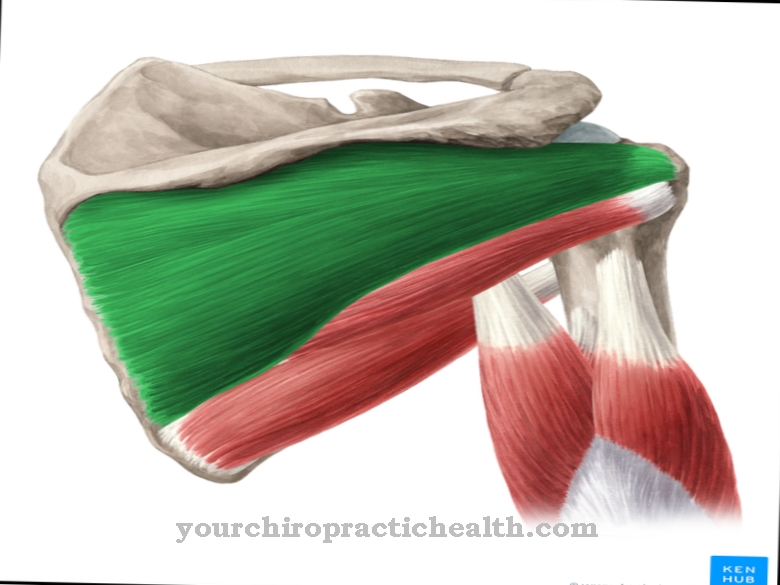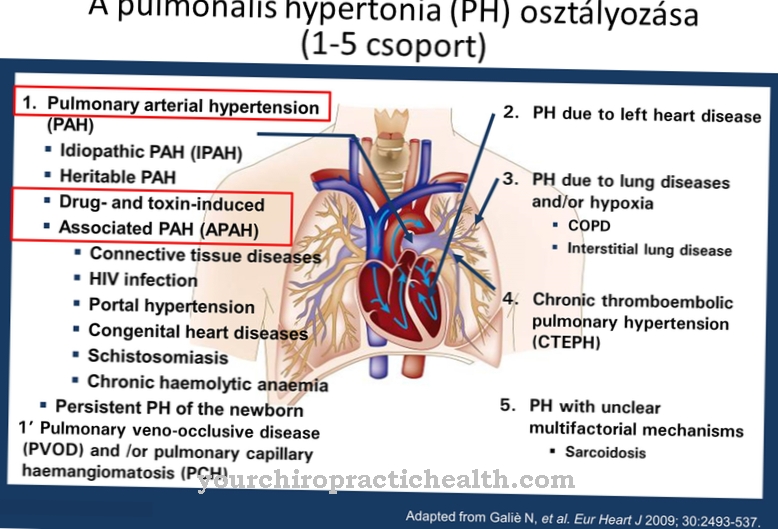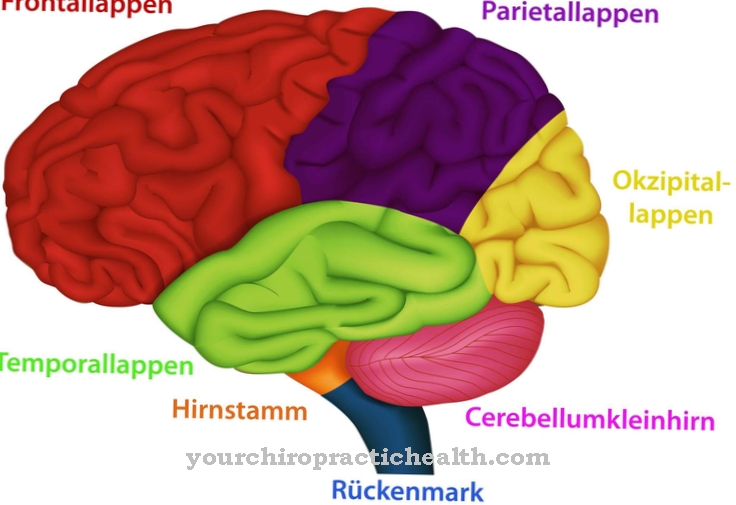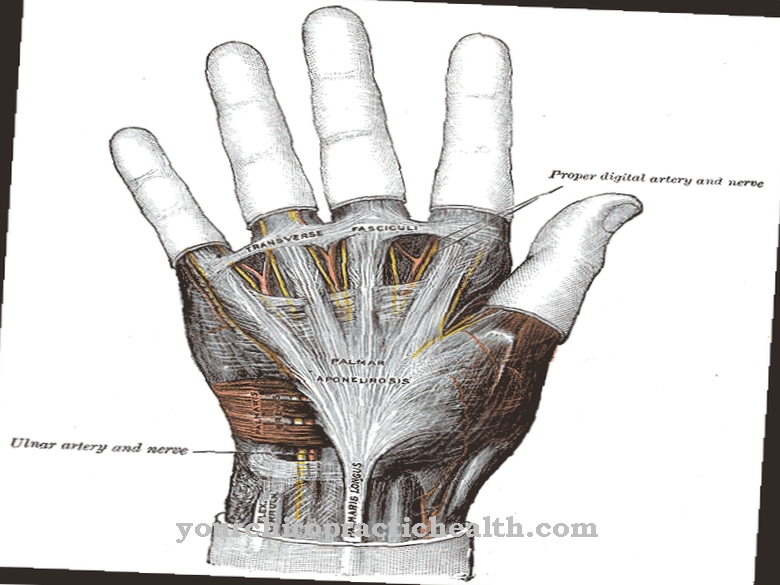From Shin Usually every child already knows that it hurts like hell when someone steps against you. This is because it is relatively unprotected for bone conditions directly under the skin. It is an important bone of the body without which we could never stand upright.
What is the shin?
The Shin (Tibia) is next to the fibula one of the two bones of the lower leg and thus connects the thigh bone with the tarsal bone.
It is a typical long bone with a contiguous medullary canal. Limiting joints are the knee and the ankle, and there is also a fairly stiff, articulated connection between the shin and fibula.
Anatomy & structure
A comparison of the anatomy can reveal the importance of the Shin For the lower extremity, i.e. the legs, make clear: While the elbow and radius of the forearm, as bones running next to each other, are functionally about the same, the weight of the lower leg (also taken literally) is clearly shifted in favor of the shin. The tibia transfers most of the body load from the knee joint to the ankle joint. The fibula runs to the side of it and serves only as a muscle origin and for suspension in the upper ankle joint.
The fibula has no direct relation to the knee joint: it is simply made up of the thighbone, shinbone and kneecap. Only the upper ankle joint is formed by the tibia and fibula as an ankle fork and the ankle roller as the joint partner, with the tibia also having the significantly larger contact area here.
On the x-ray there are other anatomical reference points of the tibia that are important for the doctor: the condyles as the upper articular cartilage on the knee joint, the tuberosity at the top as the starting point for the patellar tendon of the kneecap, the anterior edge of the tibia, whose periosteum does not come from Muscles or other soft tissues are covered and therefore hurts so hellishly when they come into contact with the outside world, and the inner quill, which belongs to the ankle, are the most important of these bone structures.
Between the tibia and fibula, the so-called interosseous membrane, a sinewy membrane, is stretched over its entire length, dividing the lower leg into two compartments, in front of and behind the bone.
Muscles of the rear thigh and the medial adductors are mainly located on the inside of the tibia directly below the knee joint, on the front and back of the tibia there are origins for the anterior and posterior lower leg muscles, which sometimes have very long tendon threads behind the ankle the ankle and outside usually bridged in front of it and allows the mobility of the foot.
All important blood vessels and nerve tracts come through the hollow of the knee and then divide, with some piercing the interosseous membrane and supplying the front of the lower leg and the dorsum of the foot, while the larger part is hidden between layers of muscles at the back and only ends in the sole of the foot and the toes.
Function & tasks
The function of the Shin is really just a guarantee of stability. It is therefore a very strong bone, without which standing and walking upright would be completely impossible. In addition, it serves as a starting and origin point for muscles and forms the joint surfaces with the thigh and talus.
Not to be forgotten is its role as a "venue" for blood formation, which, like all long bones, takes place in its bone marrow.
Illnesses & ailments
in the Shin As is the case with all bones, various diseases and injuries can develop.
The tibial fractures are certainly the most common: the tibial head fracture directly below the knee mainly occurs when the leg is longitudinally compressed. The tibial shaft fracture usually occurs together with a fracture of the fibula, typical accident mechanisms are a fall while skiing or if a pedestrian is caught by the bumper of a vehicle at the appropriate height. Because of the superficial location of the bone structures, these are also often open fractures. Meanwhile, one of the most common fractures in the human body is the fracture of the ankle, at the very bottom of the tibia or fibula. Most of them must be operationally stabilized.
It should also be mentioned that due to the division of the lower leg into narrow compartments by the interosseous membrane mentioned above, pressure situations can arise quickly after injuries: After a fracture, tissue always swells, the heart continues to pump blood down towards the foot, which is due to the increased Pressure can no longer flow back and due to the stable membranes can no longer escape from the respective compartment. Severe pain and slow death of the lower leg are the result, quick action and splitting of the fascia (making space) is required.
Pain in the shin, especially in children and adolescents, can also be so-called aseptic bone necrosis or benign and malignant tumors of the bone. Clarification, if necessary using X-ray imaging, is always indicated, especially if no accident can be remembered.



























